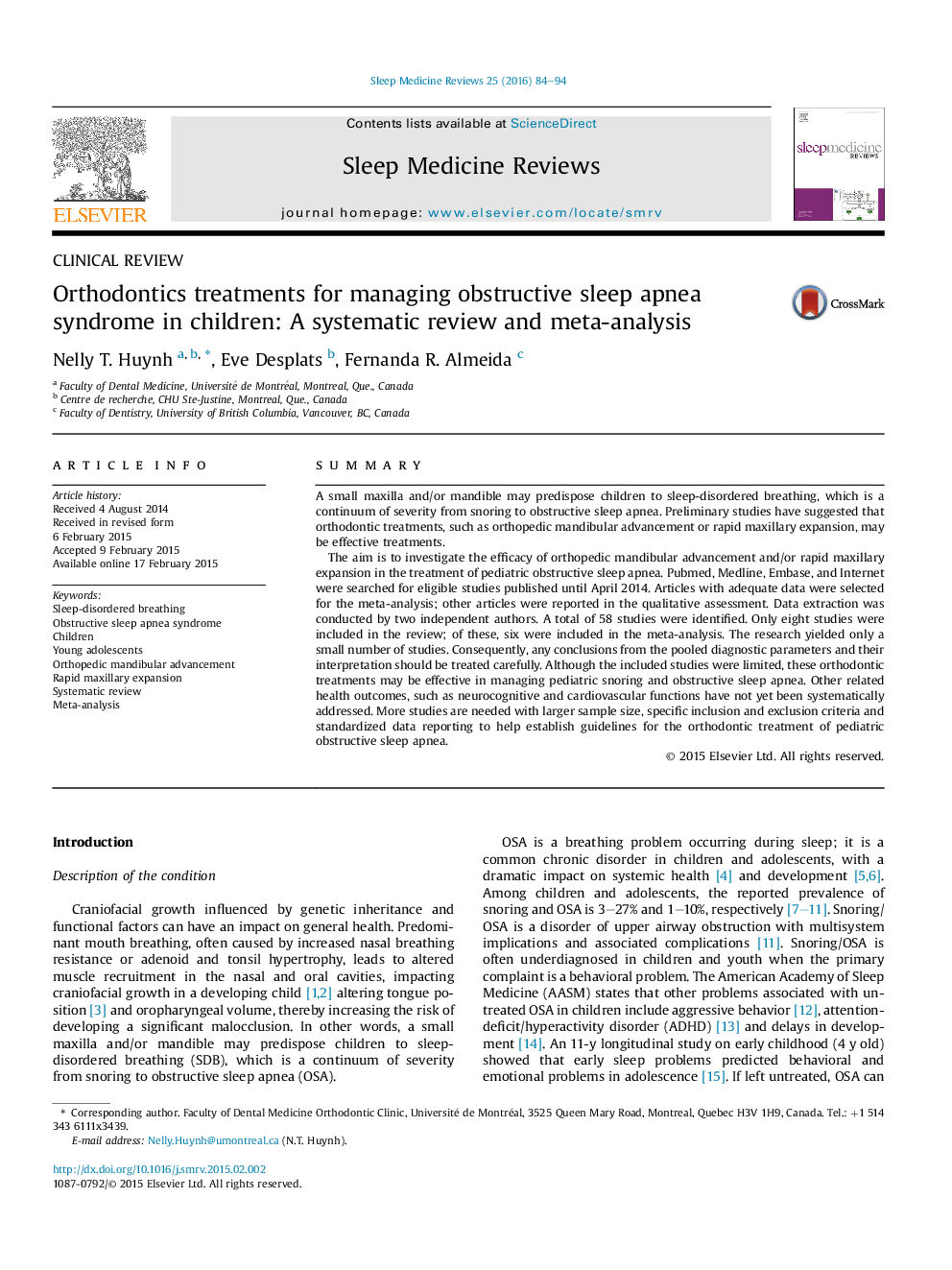| Article ID | Journal | Published Year | Pages | File Type |
|---|---|---|---|---|
| 6042852 | Sleep Medicine Reviews | 2016 | 11 Pages |
SummaryA small maxilla and/or mandible may predispose children to sleep-disordered breathing, which is a continuum of severity from snoring to obstructive sleep apnea. Preliminary studies have suggested that orthodontic treatments, such as orthopedic mandibular advancement or rapid maxillary expansion, may be effective treatments.The aim is to investigate the efficacy of orthopedic mandibular advancement and/or rapid maxillary expansion in the treatment of pediatric obstructive sleep apnea. Pubmed, Medline, Embase, and Internet were searched for eligible studies published until April 2014. Articles with adequate data were selected for the meta-analysis; other articles were reported in the qualitative assessment. Data extraction was conducted by two independent authors. A total of 58 studies were identified. Only eight studies were included in the review; of these, six were included in the meta-analysis. The research yielded only a small number of studies. Consequently, any conclusions from the pooled diagnostic parameters and their interpretation should be treated carefully. Although the included studies were limited, these orthodontic treatments may be effective in managing pediatric snoring and obstructive sleep apnea. Other related health outcomes, such as neurocognitive and cardiovascular functions have not yet been systematically addressed. More studies are needed with larger sample size, specific inclusion and exclusion criteria and standardized data reporting to help establish guidelines for the orthodontic treatment of pediatric obstructive sleep apnea.
